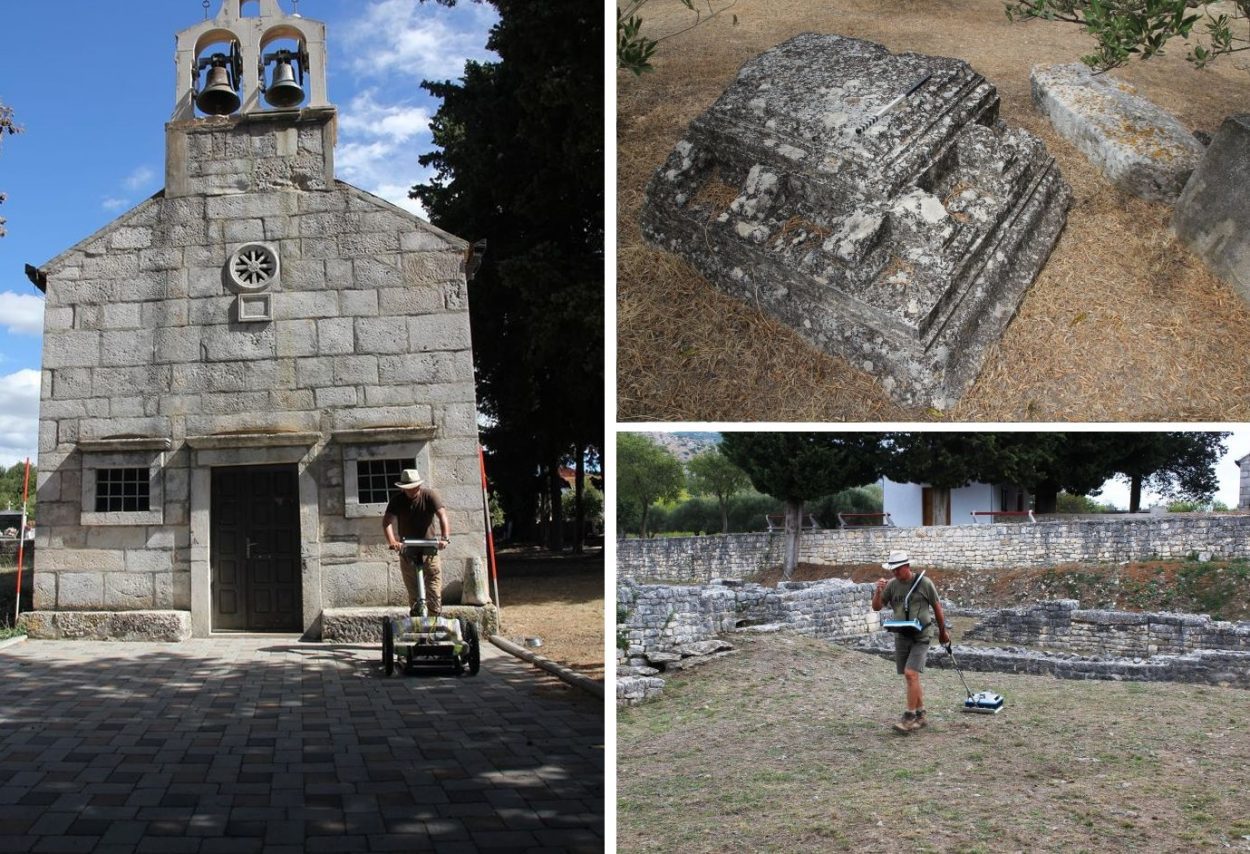Archaeologists have identified a monumental Roman structure during a ground-penetrating radar survey in the village of Danilo, located in the Dalmatia region of Croatia.
Ground-penetrating radar (GPR), is a geophysical method that uses radar pulses to image the subsurface. It is a non-intrusive method of surveying the sub-surface to detect and map subsurface archaeological artefacts, features, and patterning.
The survey revealed a large rectangular building, with indications of a colonnade and entrance clearly visible beneath the area of an 18th century church.
For years, archaeologists have found evidence of a structure, with numerous architectural elements and decorative masonry being uncovered.
It is known that the 18th century church was built on the foundations or an earlier, small Romanesque Christian temple, however the study reveals an even earlier building which measures approximately 20 x 10 metres.
During antiquity, the site was a major Roman centre, with inscriptions found during previous studies mentioning Municipium Riditarum, a Romanised settlement of the Ridite tribe.
Professor Fabian Welc, from the Institute of Archaeology of the Cardinal Stefan Wyszyński University in Warsaw said: “The data we have collected, indicates that beneath the church and the adjacent cemetery, there are remains of the temple, which was part of the forum, i.e. the most important part of every Roman city”.
A joint Polish-Croatian project has been underway in Danilo since 2019. It consists of researchers from the Institute of Archaeology of the Cardinal Stefan Wyszyński University in Warsaw, the Institute of Archaeology in Zagreb and the Museum in Šibenik.
Header Image Credit : Professor Fabian Welc







